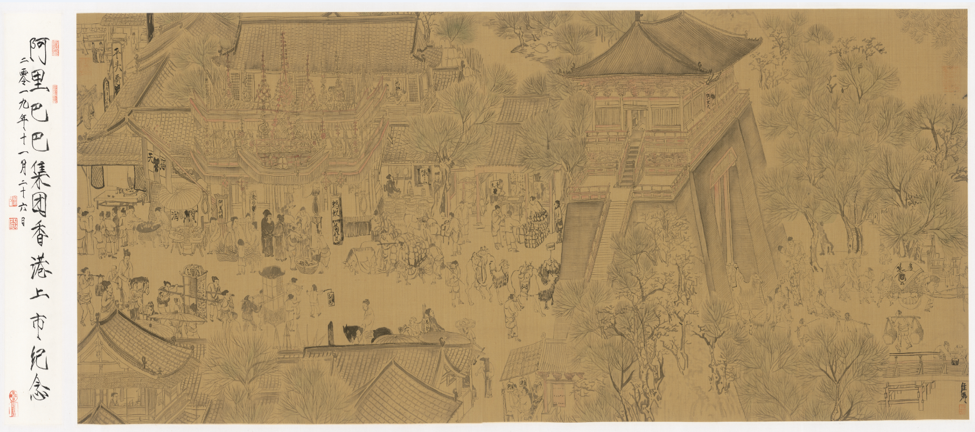
Alibaba Group on Tuesday began trading shares on The Stock Exchange of Hong Kong, marking a coming home of sorts as the city was Alibaba’s first choice for an initial public offering in 2014.
Some of Hong Kong’s rules for its capital markets – particularly regarding shareholder classes – had prevented that listing given Alibaba’s unique corporate governance, prompting the e-commerce giant to choose the New York Stock Exchange instead. But the Hong Kong exchange has since amended these rules, allowing for Alibaba’s return.
WATCH: Defining Alibaba’s Mission, Vision and Values
“I want to especially thank Hong Kong and the Hong Kong Stock Exchange. As a result of the continuous innovation and changes to the Hong Kong capital market, we are able to realize what we regrettably missed out on five years ago,” Alibaba Group Executive Chairman and CEO Daniel Zhang said.
Now trading under the stock code “9988,” the Hong Kong listing was part of a global offering of 500 million new shares. Alibaba will continue to trade on the New York Stock Exchange, with the Hong Kong shares fully fungible with the American Depositary Shares listed on the NYSE.
Alibaba’s initial public offering on the NYSE, at $21.8 billion, is still the largest ever. Just as the company did then, Alibaba for its Hong Kong listing chose to let some of its customers and merchants ring the opening gong instead of top executives. They included a Singaporean durian seller who accepts mobile-payments app Alipay, an Australian dragonboat-racing enthusiast who bought her most recent dragon boat on Tmall – and had it shipped 8,000 miles to Sydney – and a Rwandan fashion entrepreneur who was among the top finalists in the Jack Ma Foundation’s first Africa Netpreneur Prize Initiative.
WATCH: Highlights from Alibaba’s Hong Kong Listing
Alibaba said the change from the wide range of participants ringing the gong – who were connected to business units from Taobao and Tmall to Lazada and Fliggy, and were users, merchants, IoT experts and entrepreneurs – showed “the globalization and diversification of the Alibaba Digital Economy” since the NYSE listing five years ago. (You can read about all the 10 “opening gong” readers here.)
“On this important milestone, I want to thank our customers first and foremost. My gratitude goes to all the Alibaba consumers who have supported us over the past 20 years, standing by us through our trial and error, as well as innovation for the future,” Zhang said. “Today, we are honored to have 10 customers and partners from across our Alibaba digital economy representing four continents and eight countries strike the gong at our listing ceremony, marking the start of our trading on the Hong Kong Stock Exchange.”
Alibaba also gifted a special version of the classic Chinese painting “Along the River During the Qingming Festival” (seen below) to the Hong Kong exchange. Among the most famous paintings handed down through the generations in China, “Along the River” portrays an urban setting in the 12th century Song Dynasty that illustrates the social and economic prosperity of the time. However, this version includes cameo appearances by Tmall, Taobao, Ant Financial, Lazada, Freshippo, Ele. me, Alibaba Cloud, Youku and other Alibaba business units “to symbolize the rise of business in modern-day China,” Alibaba said in a release. (Read the full explanation here.)
Alibaba used the occasion re-emphasize its goals of serving over 1 billion annual active consumers and achieve over RMB10 trillion in annual gross merchandise volume (GMV) through its China consumer business in the next five years. These will keep the company on track to reach its long-term goals of serving 2 billion consumers globally, empowering 10 million profitable enterprises and creating 100 million jobs.
“We are also grateful for being a part of this era, which is driven by digital innovation. Through the development of the internet and digital economy, we have been granted the opportunity to fulfill our founding mission, ‘to make it easy to do business anywhere,'” Zhang said. “We want to use digital technology to help our customers and partners embrace the era of the digital economy.”





